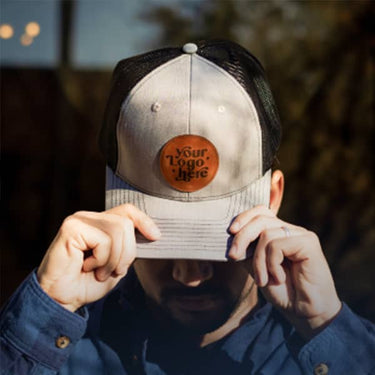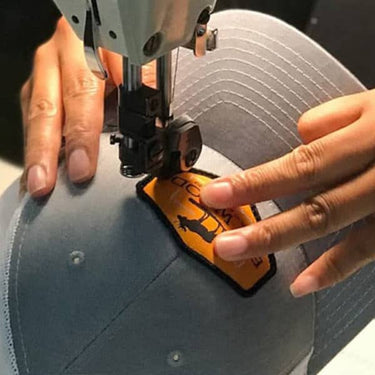Choosing the Perfect Hat Style and Embroidery Tips
Choosing the Right Hat Style for Embroidered Hats
Dad Hats
Dad hats are a classic choice for those seeking a versatile and universally loved design. These hats feature fabric that covers the entire 360 degrees, making them ideal for side and back embroidery. This full coverage allows for a variety of design placements, ensuring your custom embroidered hat stands out from every angle. The low-key design of dad hats makes them a popular choice for casual wear, appealing to a broad audience.
Beanies
Beanies are not only stylish but also practical, providing warmth during colder months. They are designed to be one-size-fits-all, which simplifies the selection process. Beanies are particularly suitable for simple embroidery designs due to their knitted fabric. This material can sometimes present challenges for more intricate designs, so opting for straightforward logos or text ensures a clean and consistent look. The snug fit and cozy feel of beanies make them a favorite for both fashion and function.

Trucker Hats
For those looking for ample design space, trucker hats are an excellent option. The 7-panel style is especially popular because it offers a large, uninterrupted front panel, perfect for showcasing your embroidered design without any seams getting in the way. However, it’s important to note that the mesh backing of trucker hats can complicate side and back embroidery. The mesh material is less stable than solid fabric, making it harder to achieve consistent results. Despite this, the front panel provides a generous canvas for your custom artwork.

Bucket Hats
Bucket hats have surged in popularity, particularly among younger demographics. These hats are fantastic for custom embroidery, offering a unique and trendy look. One of the standout features of bucket hats is their reversible options, allowing for dual designs and increased versatility. This makes them an appealing choice for those who want to maximize their embroidered hat’s potential. Whether for a casual day out or a stylish accessory, bucket hats provide a fun and functional option for custom embroidery.
| Hat Style | Key Features | Ideal For | Design Challenges |
|---|---|---|---|
| Dad Hats | 360° fabric coverage | Casual wear | None |
| Beanies | Warmth, one-size-fits-all | Cold weather, simple designs | Intricate designs |
| Trucker Hats | Large front panel, mesh back | Ample design space | Side/back embroidery |
| Bucket Hats | Reversible, trendy | Dual designs, young audience | None |
By understanding the unique features and benefits of each hat style, you can make an informed decision that best suits your design needs and target audience. Whether you choose the classic dad hat, the cozy beanie, the spacious trucker hat, or the trendy bucket hat, each offers distinct advantages for creating a standout embroidered hat. If you’re looking for hat embroidery near me, these options will ensure you find the perfect style for your needs.

Embroidery Design Considerations
| Consideration | Details | Recommendations |
|---|---|---|
| Ideal Sizes | Max 2.25” height, 4” width | Beanies: 1.75” height |
| 3D Embroidery | Raised texture, higher cost | Simple designs, avoid details |
| Color Choices | Madeira vs. Pantone | Align with Madeira colors |
| Cost Implications | Detailed designs cost more | Lower color count |
| Gradient Limitations | Not suitable for gradients | Use solid colors, bold lines |
Ideal Embroidery Sizes for Embroidered Hats
When designing an embroidered hat, it’s crucial to consider the size constraints. For most hats, the ideal embroidery size should not exceed 2.25 inches in height and 4 inches in width. This ensures that the design fits well and maintains its integrity. However, for beanies and visors, the maximum height should be 1.75 inches, while the width remains at 4 inches. These dimensions help in achieving a balanced and aesthetically pleasing design.

For side and back designs, the available space is significantly smaller. Additionally, hats with mesh backs, like trucker hats, present consistency challenges. The mesh material can vary, making it difficult to achieve uniform embroidery across multiple hats. Similarly, beanies, with their unique threading, can also pose consistency issues. Therefore, simpler designs are recommended for these areas to ensure uniformity and quality.
Three-Dimensional Embroidery
Three-dimensional, or puff embroidery, adds a unique, raised texture to your design, giving it a standout look. This technique is particularly effective for simple designs or text, as it enhances the visual appeal without overwhelming the viewer. Think of the bold, curved letters on a baseball cap; that’s the impact of puff embroidery.
However, this technique comes with a higher cost, typically an additional $3 per hat. Due to its complexity, puff embroidery is not recommended for detailed logos. The intricate details can get lost in the raised texture, making the design less clear and less effective.
Color Choices in Embroidery
Madeira vs. Pantone Colors
When it comes to color choices in embroidery, understanding the difference between Madeira and Pantone colors is essential. Digital proofs often use Pantone colors, which are widely recognized and used in various industries. However, direct embroidery utilizes Madeira colors, which are specifically designed for thread work. Madeira colors tend to be more saturated, providing a richer and more vibrant finish.
To ensure the best match, it’s advisable to align your design with Madeira colors before considering Pantone. Madeira offers a color match guide that can help in this process, ensuring that the final embroidered product meets your expectations.
Cost Implications of Color
The complexity of your design can significantly impact the cost of embroidery. Detailed designs, while visually stunning, are challenging to replicate with thread. Embroidery has its limitations in terms of space and detail, making it difficult to capture intricate designs accurately.
To manage costs, it’s recommended to use a lower color count in your design. Each additional color, though relatively inexpensive on its own, adds to the overall cost. A simpler design with fewer colors can be more cost-effective and still achieve a striking appearance.
Gradient Limitations
Embroidery is not well-suited for designs with soft gradients. The nature of thread work makes it difficult to achieve the smooth transitions between colors that gradients require. Instead, embroidery excels with solid colors and bold lines, which can be effectively rendered with thread.
In summary, when designing an embroidered hat, it’s important to consider size constraints, the benefits and limitations of three-dimensional embroidery, and the differences between Madeira and Pantone colors. Additionally, keeping the color count low and avoiding gradients can help manage costs and ensure a high-quality final product. If you’re looking for hat embroidery near me, make sure to consult with professionals who can guide you through these considerations.


